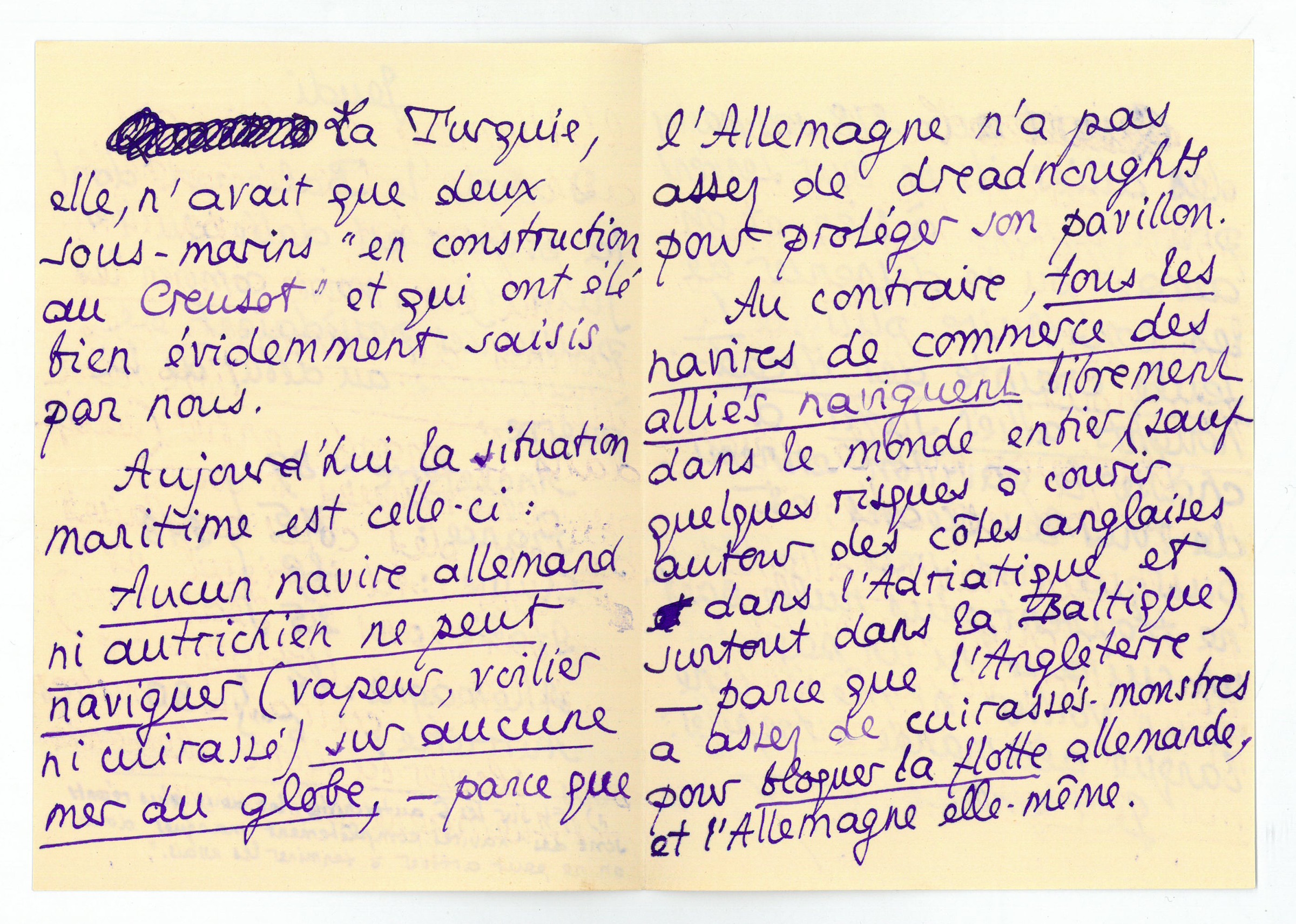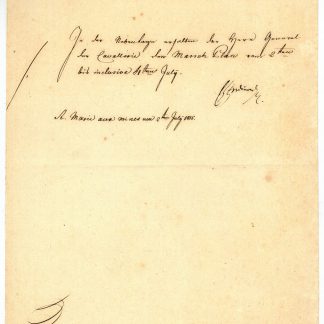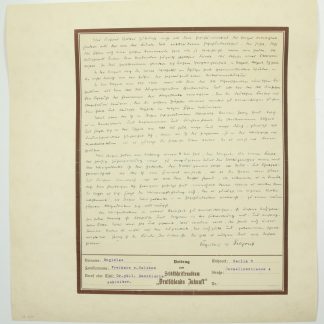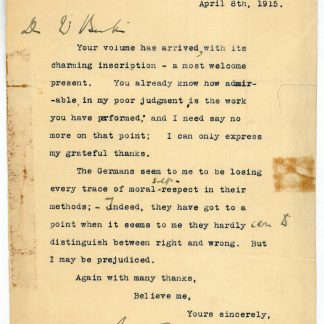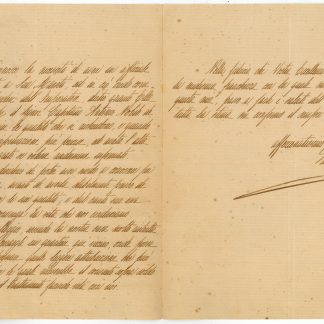Autograph letter monogramed.
8vo. 4 pp. on bifolium. In French.
€ 180.00
Intriguing letter to an unnamed recipient, offering an assessment of the Allied Powers' submarine fleets as opposed to those of the Axis Powers and their importance for maritime warfare in World War I. Louÿs first quotes a list from Raoul Testu de Balincourt's famous almanac "Flottes de combat", dated 1 June 1914, and explains why the Ottoman and Austrian fleets may be ignored. According to his assessment, the German fleet lacked "dreadnoughts to protect their ensign" and thus, at this point, "no German nor Austrian vessel can navigate (steam, sail, or armoured) any sea on the globe", while "all commercial ships of the Allies freely navigate throughout the entire world", only running "some risk along the English coasts, in the Adriatic sea, and especially in the Baltic". In this situation, the combined 218 submarines of the Allies were, according to Louÿs, "practically useless", and they "could have stopped building them, as fear of the Allied dreadnoughts alone sufficed to chase the enemy's standard from all oceans", while the submarines found no German ships left "to torpedo".
The letter must have been written after Italy joined the Allies in April 1915 and before the United States entered the war two years later. The Allied naval blockade of Germany was indeed successful at restricting the German Navy to the German Bight. However, the German submarine fleet inflicted significant damage on the British merchant fleet before the establishment of the convoy system in the second half of 1917.
Well preserved.


